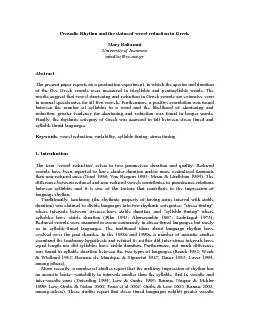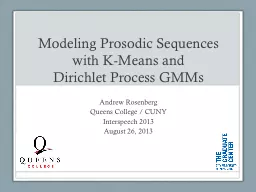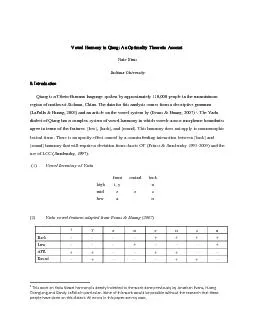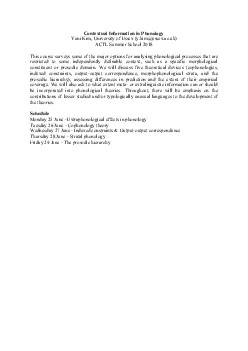PDF-Prosodic Rhythm and the status of vowel reduction in Greek
Author : pamella-moone | Published Date : 2017-03-03
Mary Baltazani University of Ioannina mbaltazccuoigr Abstract a production experiment in which the spectra and duration of the five Greek vowels were measured inasyllabic
Presentation Embed Code
Download Presentation
Download Presentation The PPT/PDF document "Prosodic Rhythm and the status of vowel ..." is the property of its rightful owner. Permission is granted to download and print the materials on this website for personal, non-commercial use only, and to display it on your personal computer provided you do not modify the materials and that you retain all copyright notices contained in the materials. By downloading content from our website, you accept the terms of this agreement.
Prosodic Rhythm and the status of vowel reduction in Greek: Transcript
Download Rules Of Document
"Prosodic Rhythm and the status of vowel reduction in Greek"The content belongs to its owner. You may download and print it for personal use, without modification, and keep all copyright notices. By downloading, you agree to these terms.
Related Documents














